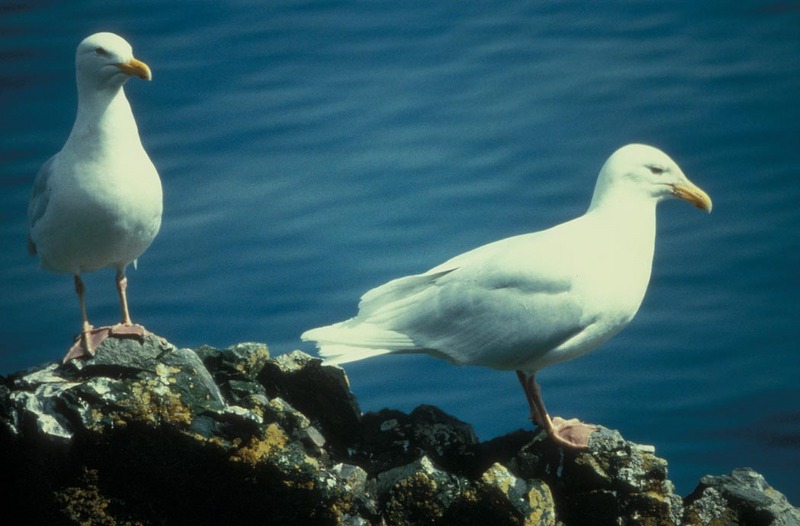|
| 질의: Larus hyperboreus | 결과: 2번째/28 | |
Glaucous Gull pair (Larus hyperboreus) (흰갈매기)
| 제목: | Glaucous Gull pair (Larus hyperboreus) (흰갈매기)
| | 올린이: | Phoby (phoby@hanafos.com)
| |

| 해상도: 1050x691
파일크기: 96876 Bytes
촬영일: 2004:01:22 12:12:33
등록시간: 2004:12:24 11:12:34
|
From the U.S. Fish and Wildlife Service's online digital media library.
Check http://images.fws.gov/ for higher quality version.
Metadata
Title: Glaucous Gulls
Alternative Title: Larus hyperboreus
Creator: U.S. Fish and Wildlife Service
Source: AK/RO/00818
Publisher: (none)
Contributor: ASSISTANT REGIONAL DIRECTOR-EXTERNAL AFFAIRS
Language: EN - ENGLISH
Rights: (public domain)
Audience: (general)
Subject: Refuges, Yukon Delta National Wildlife Refuge, Birds, Seabirds, Gull
Date Issued: January 22 2004
The glaucous gull (Larus hyperboreus) is a large gull, the second-largest gull in the world. It breeds in Arctic regions of the Northern Hemisphere and winters south to shores of the Holarctic. The glaucous gulls breed colonially or singly on coasts and cliffs, making a lined nest on the ground or cliff. Normally, two to four light brown eggs with dark brown splotches are laid. These gulls are omnivores like most Larus gulls, and they eat fish, insects, molluscs, starfish, offal, scraps, eggs, small birds, small mammals, and carrion, as well as seeds, berries, and grains.
|
댓글 |
|---|
| | 손님 |
|
| The glaucous gull (Larus hyperboreus) is a large gull, the second-largest gull in the world. It breeds in Arctic regions of the Northern Hemisphere and winters south to shores of the Holarctic. The glaucous gulls breed colonially or singly on coasts and cliffs, making a lined nest on the ground or cliff. Normally, two to four light brown eggs with dark brown splotches are laid. These gulls are omnivores like most Larus gulls, and they eat fish, insects, molluscs, starfish, offal, scraps, eggs, small birds, small mammals, and carrion, as well as seeds, berries, and grains. |
^o^
동물그림창고 똑똑전화 누리집
^o^
|
|
|